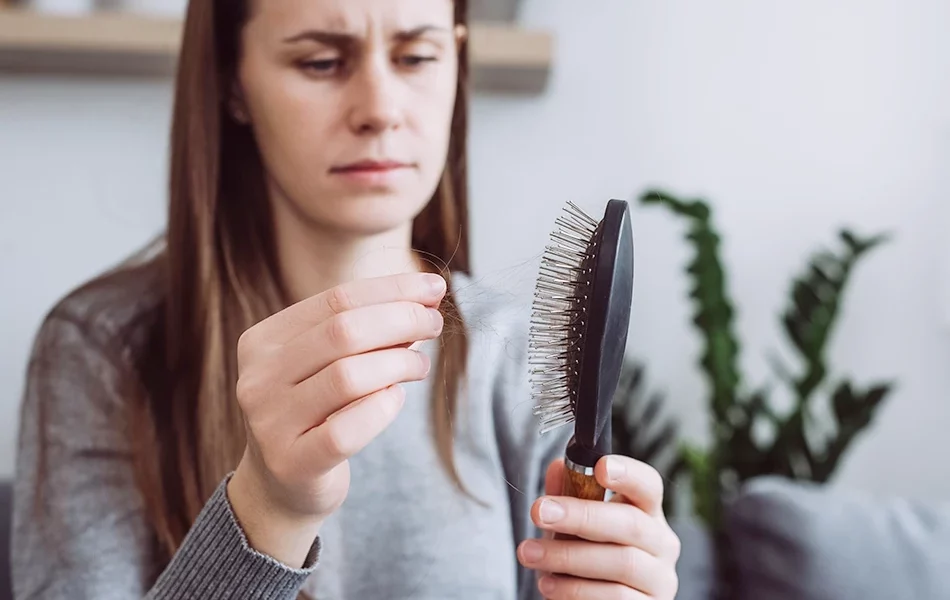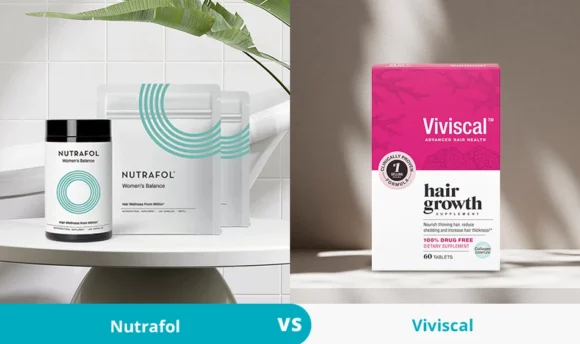Hair Shedding vs. Hair Loss: The Difference Explained
When you hear the terms hair shedding and hair loss, you might assume they’re the same thing. However, these are two separate hair concerns that require different treatments, so it’s important to know which one you have.

Any sign of extra hair falling out in the shower, on your pillow, or in your hairbrush can set off alarms. You may go into panic mode, but it’s important to recognize what’s going on before you fear the worst.
So, is it hair loss or excess hair shedding? This article explores both conditions in detail so you can tell one from the other and act according to your hair needs.
Hair Shedding vs. Hair Loss: What’s the Actual Difference?
Hair shedding is when the hairs from the growing phase enter the resting phase too early. The hair is still growing, but you are losing more of it. Hair loss is when something hinders the growing phase, causing the hair to stop growing entirely.
Hair shedding is normal to an extent, but abnormal shedding is when more hair falls out than usual.
It’s generally triggered by stressful situations or changes in the body and is often a temporary reaction. In most cases, you can expect hair shedding to clear up on its own and the hair to grow back eventually.
Hair loss, on the other hand, is a more serious condition because the hair stops growing. It happens when something prevents the growth phase from functioning properly, and the hair can no longer grow. You might notice thinning hair and patches of missing hair on your head.
It’s essential to seek medical attention to determine the cause of your loss, as it may require treatment.
What Is Hair Shedding?
Hair shedding is a completely normal part of the hair cycle. The hair follicles move through the anagen phase (growth) and the telogen phase (resting) before entering the exogen phase, where hair shedding occurs.
The average person loses 50–100 hair strands daily. While it sounds a lot, it’s just the human body’s natural renewal process that makes way for new hair growth.
However, you could have a condition called telogen effluvium if you are experiencing excessive hair shedding. It is a scalp disorder that causes the hair follicles to prematurely enter the telogen phase of the hair growth cycle, resulting in more hair fall than usual.
Why Might You Be Shedding More Than Usual?
Excessive hair shedding can occur due to factors like hormonal changes, stress, and certain medications. It is common among people dealing with excess stress, who have recently given birth, lost a lot of weight, have undergone surgery, or are recovering from an illness.
Stress-related hair shedding is temporary for most people. The body eventually adapts, and the hair returns to its original fullness. It’s also worth noting that most people notice excessive hair shedding a few months after experiencing a stressful event or changes to the body. For example, many people noticed hair loss due to Covid-19 even 3 to 6 months after the infection.
What Is Considered Hair Loss?
Hair loss is another type of hair disorder called anagen effluvium that occurs when the hair growth cycle (the anagen phase) is disrupted. In this case, something is actually preventing the hair from growing, causing sudden and excessive hair shedding.
Unlike hair shedding, your hair loss will only stop when you’re able to identify and treat the cause. It is a more severe condition that might result in permanent hair loss for some people.
Main Causes of Hair Loss
Hair loss occurs for several reasons, but discovering the root cause is vital to determining the most effective treatment to regain healthy hair. The most common causes are:
- Aging
- Hereditary hair loss (androgenetic alopecia)
- Problems with the immune system (alopecia areata)
- Hormonal imbalances
- Cancer treatment
- Certain drugs and medications
- Tight hairstyles that pull the hair (traction alopecia)
- Poor haircare
How to Maintain Healthy Hair? 5 Tips for the Good Hair Day Every Day
You can practice self-care regimens to prevent hair loss, hair thinning, and generally poor hair health. Prioritizing haircare will help you hold onto your luscious locks for as long as possible.
Try these 5 tips to help ensure your hair sheds at a healthy rate.
#1 Eat a nutritious diet
Your diet heavily influences your overall health, and that includes your hair.
Filling your diet with plenty of essential nutrients ensures your hair follicles get everything they need to work correctly. Too few calories, protein malnutrition, and micronutrient deficiencies can influence hair growth – problems linked to acute telogen effluvium.
Biotin, folic acid, iron, zinc, fatty acids, and vitamins A, D, and E are arguably the most vital nutrients for your hair.
#2 Take care of your scalp
Your hair grows from the bottom of the hair follicle. Your scalp supplies blood to the hair follicle, ensuring the hair root receives enough oxygen and nutrients. You need this healthy environment for your hair to grow and to continue growing at a healthy rate.
Scalp issues, such as fungal infections and product buildup, can clog and damage the follicles. This can hinder hair growth and contribute to hair loss when left untreated. Therefore, caring for your scalp is non-negotiable if you want to reduce hair loss risk.
Treat yourself to regular scalp massages to keep the blood circulation going strong.
#3 Use gentle hair products
Part of caring for your scalp comes down to good haircare. The cosmetics you use play an important role in cleansing your scalp and your hair’s overall appearance.
Using products containing harsh chemicals can weaken and damage the hair, and that might result in hair loss or thinning hair. Gentle formulas containing mild ingredients have the opposite effect: they clean the scalp, remove buildup, and nourish and protect your hair.
Natural ingredients are always a good pick. You can use carrier oils and herbal remedies to condition your hair while supporting healthy growth.
#4 Try to reduce stress
Emotional and physiological stress is a major trigger for those who experience excessive hair shedding. While you can’t always control what’s going on around you, there are some things you can do to limit the powerful impact of stress.
Effective stress busters include exercise, stretching, meditation, and connecting with others. You can try different methods to see what works for you, whether going for long morning walks, hitting the gym, or meeting up with friends for coffee.
#5 Stay hydrated
Staying hydrated supports your hair from the inside out. Your hair and scalp need moisture, and not drinking enough water can lead to scalp irritation and brittle and dry hair. When your hair is in poor condition, it may eventually result in hair thinning and hair loss.
FAQs
On average, a person loses 50–100 hairs a day. It might seem daunting at first, but this level of hair loss is a normal part of your hair’s natural cycle.
Yes, it is entirely normal for some hair to fall out. Hair shedding is part of the hair growth cycle’s exogen phase that sees the average person lose 50–100 hairs per day. However, excessive hair shedding can indicate an underlying medical condition.
Yes, hair shedding is normal for everybody. Your hair’s growth cycle enters the exogen phase, also known as the shedding phase, which allows old hair to fall out while new hair grows.
Losing 300 hairs a day is not a regular occurrence. This is almost three times the average amount of healthy loss, which is 50 to 100 hairs. You might have a medical condition called telogen effluvium if you are experiencing excessive shedding.
Conclusion
Hair loss and hair shedding are similar because they both result in losing hair strands. Nevertheless, they are two different conditions that require different care. Your dermatologist can help you distinguish which one you have – you’ll then know what to expect and what to do next.

















































 Select your language:
Select your language: 








